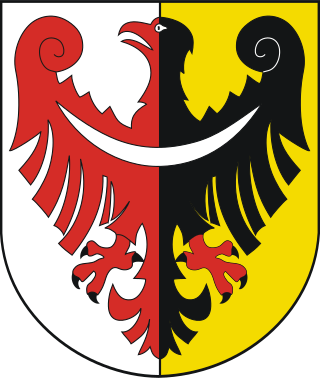
Henry II of Sponheim, the Younger (born between 1292 and 1295; died before 11 October 1323, Wolfstein) was a German nobleman of the house of Sponheim.

Henry II of Sponheim, the Younger (born between 1292 and 1295; died before 11 October 1323, Wolfstein) was a German nobleman of the house of Sponheim.
He married Loretta of Salm in 1315.
He may have ruled the county of Sponheim alongside his father, John II, Count of Sponheim-Starkenburg, for a brief while; however, he pre-deceased his father by five months. His father John II was succeeded by his grandson (the son of Henry II), John III who was, however, only nine years old at his grandfathers death. For the following seven years, 1324–1331, his mother, Loretta of Sponheim, acted as his regent.

Amadeus V was Count of Savoy from 1285 to 1323.
Henry III "the Great" was the count of Sayn (1202–1246), a county located near the Sieg River in northern Rhineland-Palatinate, Germany. Henry III shared the first year of his reign with his uncle, count Henry II, as he and his father Eberhard II had co-ruled the county. Gottfried II had been a regent from 1181 and continued until his death in 1220. John, count of Sponheim-Starkenburg, was regent from 1226 until Henry's death in 1246.

Rudolf I of Bavaria, called "the Stammerer", a member of the Wittelsbach dynasty, was Duke of Upper Bavaria and Count Palatine of the Rhine from 1294 until 1317.

Baldwin of Luxembourg was the Archbishop- Elector of Trier and Archchancellor of Burgundy from 1307 to his death. From 1328 to 1336, he was the diocesan administrator of the archdiocese of Mainz and from 1331 to 1337 of those of Worms and Speyer. He was one of the most important German prelates of his age.

The Counts of Vianden, ancestors of the House of Orange-Nassau, were associated with the castle of Vianden in Luxembourg.
Engelbert II, a member of the House of Sponheim, was Margrave of Istria and Carniola from about 1103/07 until 1124. In 1123, he succeeded his elder brother Henry as Duke of Carinthia and Margrave of Verona which he held until his retirement in 1135.
The House of Sponheim or Spanheim was a medieval German noble family, which originated in Rhenish Franconia. They were immediate Counts of Sponheim until 1437 and Dukes of Carinthia from 1122 until 1269. Its cadet branches ruled in the Imperial County of Ortenburg-Neuortenburg and various Sayn-Wittgenstein states until 1806.

The County of Sponheim was an independent territory in the Holy Roman Empire that lasted from the 11th century until the early 19th century. The name comes from the municipality of Sponheim, where the counts had their original residence.

Bernhard II, Prince of Anhalt-Bernburg, was a German prince of the House of Ascania and ruler of the principality of Anhalt-Bernburg.
Przemko II of Głogów was a Duke of Żagań, Ścinawa, etc., from 1309 to 1321, Duke of Oleśnica, Namysłów, Gniezno and Kalisz from 1309 to 1312 and Duke of Głogów starting in 1318.

Bernard (II) of Świdnica was a Duke of Jawor-Lwówek-Świdnica-Ziębice between 1301–1312, of Świdnica-Ziębice during 1312–1322, and the sole Duke of Świdnica from 1322 until his death.
Joan of Artois, Countess of Foix, Viscountess of Béarn, was a French noblewoman, and the wife of Gaston I de Foix, Count of Foix, Viscount of Béarn. From 1331 to 1347 she was imprisoned by her eldest son on charges of scandalous conduct, dissolution, and profligacy.

Johann III, Count of Sponheim-Starkenburg, the Older, reigned over the County of Sponheim for 67 years. He also received many epithets such as "the Noble" and, because of his declining vision, "the Blind".
Maria Palaiologina was the Queen consort of Stephen Uroš III Dečanski of Serbia (1324–1331). She was the daughter of panhypersebastos John Palaiologos, and great-niece of Emperor Andronikos II Palaiologos. Her maternal grandfather was megas logothetēs Theodore Metochites.

Henry I, Count of Holstein-Rendsburg (1258–1304) was the first Count of Holstein-Rendsburg.
Simon II of Sponheim was a German nobleman. He was a member of the House of Sponheim and a ruling Count of the County of Sponheim.
Loretta of Sponheim was a countess of the noble house of Sponheim-Starkenburg, regent of the County of Sponheim for her son, count John III, from 1324 to 1331.
Gottfried III, Count of Sponheim was a German nobleman. He succeeded his father Gottfried II as Count of Sponheim.

Philip of Ibelin was Seneschal of the Kingdom of Cyprus. As one of the sons of Philippa Barlais and her husband Guy of Ibelin, he was a member of the house of Ibelin.
Wilhelm I, Count of Katzenelnbogen was a Count from the elder line of the House of Katzenelnbogen. He ruled Lower Katzenelnbogen from 1276 to 1331. Wilhelm was the son of Diether V of Katzenelnbogen and Margaret of Jülich, daughter of William IV of Jülich.